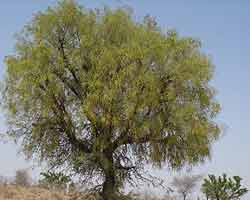Telangana Festivals
Telangana
top Festivals
Telangana
Festivals, The best of Indian festivals are all celebrated in Telangana. The
art forms of the Telugu people manifest all-year round in the form of dance,
drama, music and other performing arts including folk arts. They depict varied
expressions of joy, hope, love and sheer zest for life.
Telanganites
not only celebrate the main festivals, but also celebrate certain regional
festivals like Bonalu and Batakamma all over Telangana districts, Yedupayala
Jatara in Medak, Sammakka Saralamma in Warangal district.
Telangana Festivals
Bonalu
BhonaluBonalu
– This is a festival of offering to Goddess Mahankali. This folk festival of
Bonalu is famous in the Telangana region brings an offering to the Goddess
Mahankali. The Mahankali temple is located in the busy streets of Secunderabad
area.The Dance of balancing pots with the colourfully dressed female danceres
balancing pots (Bonalu), step to the rythemic beats and tunes in praise of the
village diety Mahankali. Male dancers called the Potharajus follow the female
Dancers to the temple lashing whips and emerald margosa leaves tied around
their waists adding colour to the roaring trumpets and pulsating percussion.
Batakamma
Batakamma
is a special festival celebrated with religious fervour in the Telangana
region. Batakamma means ‘immortal woman’. It is a month long festival where
Goddess Batakamma’s idol is worshipped and is made to float on the rivers and
lakes. Basically, this is a floral festival. It falls on ‘Asvija Shuddha
Dasami’ (September -October).This festival is celebrated to glorify womanhood
and her celestial place in the family set up. During these days, Goddess
‘Gauri’ the patron Goddess of womanhood is worshipped by all the women folk
with utmost devotion and piety.Bathukamma Proccession
Batakamma
or ‘Parvati’, according to one legend, is a lover of flowers. Flowers are
arranged on a square wooden plank or a square bamboo frame with the size of
frames tapering off to form a pinnacle on top. They resemble the shape of a
temple ‘Gopura’. A lump of turmeric is kept on top of the flowers. This little
floral mountain is worshipped as Goddess Batakamma
Biggest Tribal Jatara Sammakka & Saralamma Jatara
Sri
Sammakka & Saralamma Jatara will be celebrated once in two years in Medaram
Village of Tadvai Mandal of Warangal District. This is one of the most pious,
sacred religious largest tribal gathering festivals in the state of Andhra
Pradesh. Medaram Village is situated in dense forest area about 104 KMS from
Warangal city. There are two gaddes (platforms) separately one for goddess
“Sammakka” and other for goddess “Saralamma”.
Since
time immemorial, one tree is standing on Sammakka gadde. Under this huge tree
lies couple of wooden poles, which is considered to be the totemic symbol of
Sammakka, object of worship by visitors.
The
Jatara provides not only an opportunity of interaction between tribals and non
tribals of different parts of India but also a feeling among them joining
mainstream in the presence of non-tribals in the Jatara, and it is a symbol of
common bond between tribals and their belief in cultural heritage.
The
festive atmosphere set in on November 14 and would continue till December 13.
The period is a harbinger of happiness and cheer.






